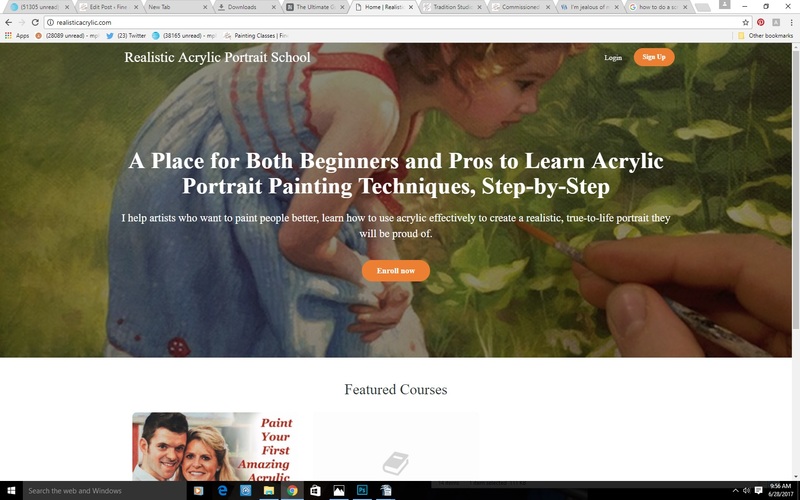
by Matt Philleo | Jul 27, 2017 | How to Paint Instruction, Tips for Artists
I have had a few people question me, “how do I log in and purchase your portrait painting course?”
Sometimes the technology is a bit challenging to figure out. Let me show you exactly how to do it. You can find me here on my blog at…
www.realisticacrylic.com
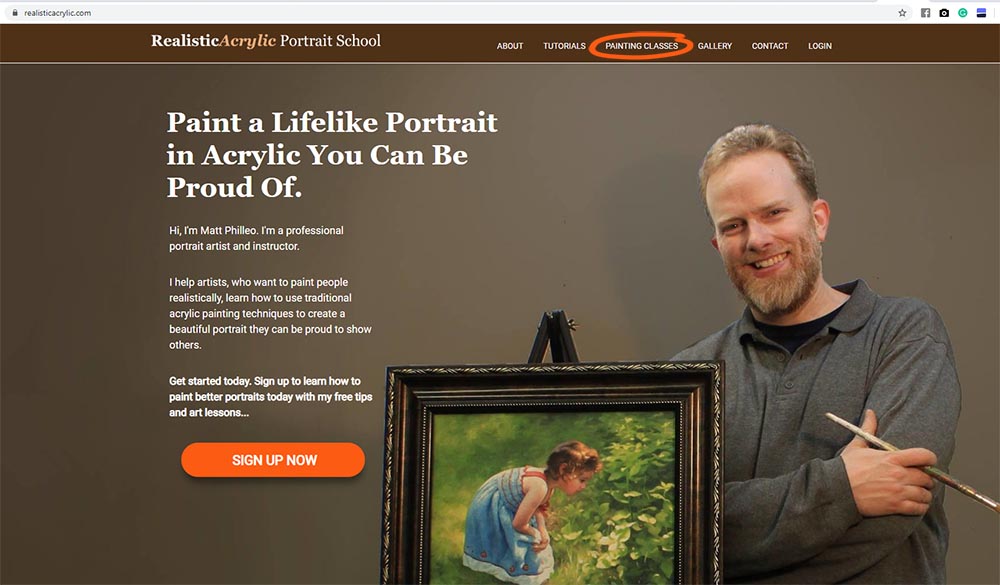
Learn to paint acrylic portraits with an online painting class today
Select the “Painting Classes” option on the top bar, and it will take you to: http://courses.realisticacrylic.com
Once you’re at my courses page…
1. The first thing you need to do is login into the Realistic Acrylic Portrait School
At this screen, click the “Login” text in the upper right. (Not the “sign up” button, but the one next to it)

2. Enter your information (email address and password you created.)
Click “Log In”

3. After logging in, select, the “Paint Your First Amazing Acrylic Portrait” course on the left (if this is the course you want. Most students start with this one or go with the All-Access Membership.)

4. It will take you to this screen. Click the “Enroll in Course” button.

5. Then, select your payment plan. You can pay in full for $97 USD or you can do a three-month payment plan, allowing you to get started for $39 USD today. But you will save $20 by paying in full!
After selecting your payment plan, click the “Enroll in Course” button.

6. Finally, enter your credit card or Paypal information and you can make payment securely online.

7. Click “Verify Payment.” Then finish the step, and confirm your purchase of the course, and you will be set! You will then be able to login like you did in step 1 and 2 and this time you will have full access to the course.
There is no time limit once you buy the course. You can use it as long as you wish.
Hope this helps… Look forward to seeing you inside the course!
All the best,
Matt
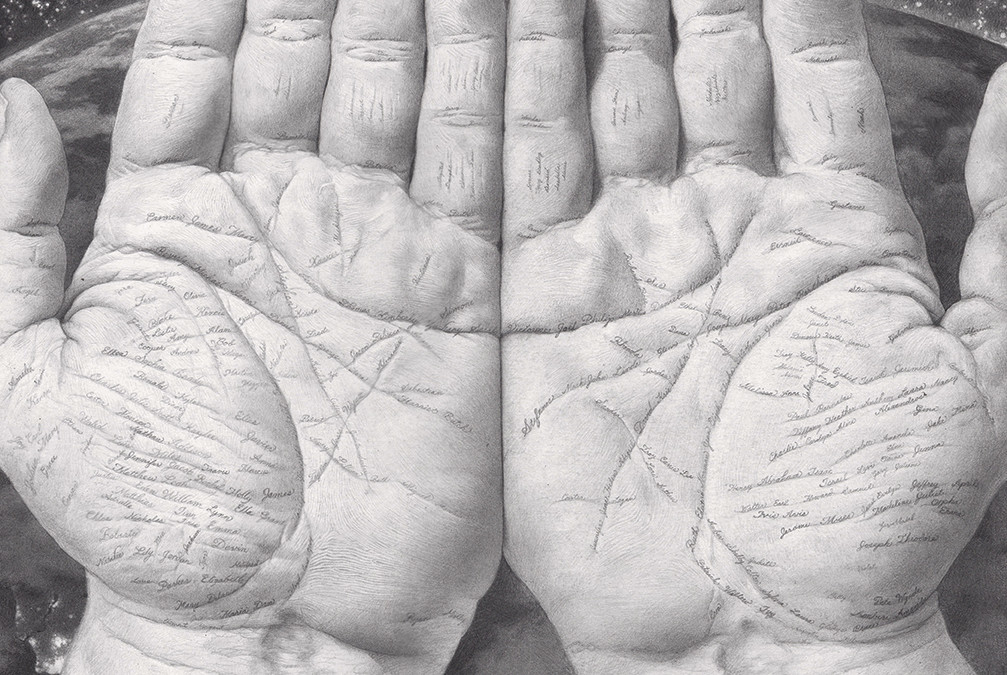
by Matt Philleo | Jul 26, 2017 | Encouraging Thoughts
One day, when I was discouraged and depressed, I read this passage in my Bible from Isaiah 49:
But Zion said, “The Lord has forsaken me,
And my Lord has forgotten me.”
“Can a woman forget her nursing child,
And not have compassion on the son of her womb?
Surely they may forget,
Yet I will not forget you.
See, I have inscribed you on the palms of My hands;
Your walls are continually before Me.
I thought, “God still loves me!” He still loves me–even though I’ve been distant from Him and messed up again. And He won’t forget me. I was comforted by His limitless promise to be faithful.
I thought, I have to do a drawing of this idea.
So I held out my own hand as a model and drew it. This is called “Inscribed.” 14″ x 17,” pencil on paper.
You will find over 300 names written within the creases and wrinkles of these hands.
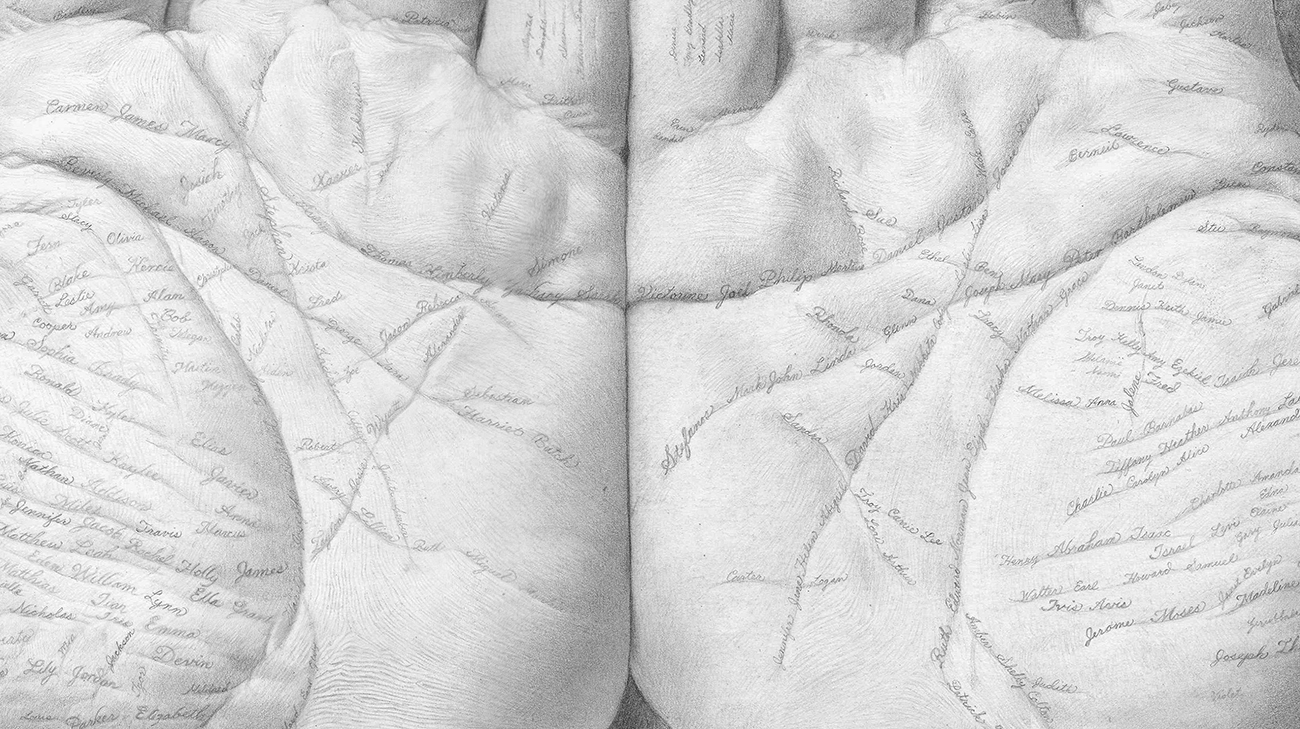
“Inscribed”, by pencil artist Matt Philleo, detail
Be encouraged. God has not forgotten you either.
If you are a born-again child of God, this scripture passage implies that your name, too, is written on the palm of His hand. This means God will never forget you. He sees every tear. He knows what you are feeling and He knows how you may be failing. But He still loves you just the same.
And the reason He can do that is because, if you’ve allowed Him to, He’s forgiven every sin you’ve ever committed through the righteous sacrifice of Jesus on your behalf.
He shed His blood, died on the cross, and rose again to give you new life.If you are a believer, He sees the perfection, the righteousness of Christ all over you. You are a jewel in his eye. Yes, you have a special place on His hands and in His heart.
Jesus said, “All that the Father gives Me will come to Me, and the one who comes to Me I will by no means cast out” (John 6:37) Anyone who continues on in sin and unbelief will end up in hell by default, but if you believe and trust in Jesus you will never be cast away. You will enjoy God’s love for you…forever!
Have a blessed day,


by Matt Philleo | Jul 6, 2017 | My Art in Progress, New Artwork, Tips for Artists
It’s amazing the things you have to do sometimes to get a painting to look realistic.
I’ve been commissioned to do a painting of the five loaves and two fishes for a book cover illustration, a commentary on the book of Mark in the New Testament. I didn’t want to copy a stock photo (illegal) but I didn’t want to just make it up (not very realistic)
So I bought some fish, some flatbread and a basket. Took the pics just as the sun was setting. Then I cooked the fish tonight and ate it with the bread. Best fish I’ve had in a long time! 🙂
Here are a few pics that I took…

“Loaves and Fishes Basket” photo 2017 by Matt Philleo

“Loaves and Fishes Basket” 2 photo 2017 by Matt Philleo
Even though this is not my usual subject matter–portraits–it’s good to do a still life once in a while to keep up with your color, shape, and value rendering skills. Many of you have seen this painting on Facebook already, but I wanted to get this posted to my blog.
Have a blessed weekend!

Matt

by Matt Philleo | Apr 15, 2017 | Christianity & Culture, Encouraging Thoughts, How to Paint Instruction, My Art in Progress, Personal Inspiring Stories, Tips for Artists
It’s easy to get frustrated in the middle of painting an acrylic portrait. Possibly your skin tones aren’t looking natural, or the values are off. Maybe the portrait just doesn’t look like the person you’re trying to capture. When you’re going for realism, and it just isn’t happening, what do you do?
Although you may be tempted to give up, don’t.
I want to give you 3 reasons why:
1. You will save time, paint and materials.
Let’s face it. Painting is a labor of love. As artists, we could choose more lucrative jobs, where our exchange of time for money paid better. But we put a lot of hours into creating a high-quality unique work of art.
So if you have put several hours into a painting only to scrap it and start over, you lost that time. In addition, you lost money with the cost of canvas, paint, and wear and tear on your brushes.
Now, even if you paint just as a hobby, it’s frustrating to take the time to create something and then have nothing to show for that time you allotted in your busy schedule. Finishing the painting makes sense then, even from a purely material standpoint.
2. Pushing past a difficult point in your painting will build your resilience and grow your “artistic muscle”.
It’s easy to give up. Sticking with something when your thoughts and emotions are screaming, “This looks terrible…I’m done with this!” is way, way harder.
This is similar to weightlifting. Serious bodybuilders know they won’t get great results unless they push past the pain. As they break down their muscle tissue, they also break down barriers and limitations they previously had. With that, their muscles grow larger and stronger, because muscles don’t like to be in pain. Endurance and stamina increases.
Several years ago, I created a portrait to celebrate my pastor’s 80th birthday. It was a portrait of him and his wife, a 16 x 20 acrylic on canvas. During a certain point in the painting, it looked pretty bad. My wife came upstairs (where my art studio used to be) and peered in to see how I was doing. She said, “That just doesn’t look right. I don’t know if you can pull it off.”
Umm…thanks!
I thought for a moment, “Can I pull this off?” Well, God helped me to “pull it off” many times. He wasn’t about to quit now. I ignored the doubt and kept at it.
I figured I had a photo that shows me what it should look like. I had a roadmap, a blueprint to tell me how to get there, how to build. And even if I took a scenic detour for a bit, I’d get it where it needed to be, eventually.
A painting is never ruined. It’s just that it might take longer to fix than you would like!
3. You will learn ways of resolving issues in your painting that you can use in future paintings.
In the case of this particular portrait, I learned that even though mid-stage during the painting process, the likeness of the subject may be off, I can correct the facial features with additional layers and it will start to look like the person.
Here is the portrait in the beginning stages. Early on, there is a lot of excitement in creating a painting. I had great expectations for how it would turn out, and I cut myself a lot of slack, because I knew I just started it.
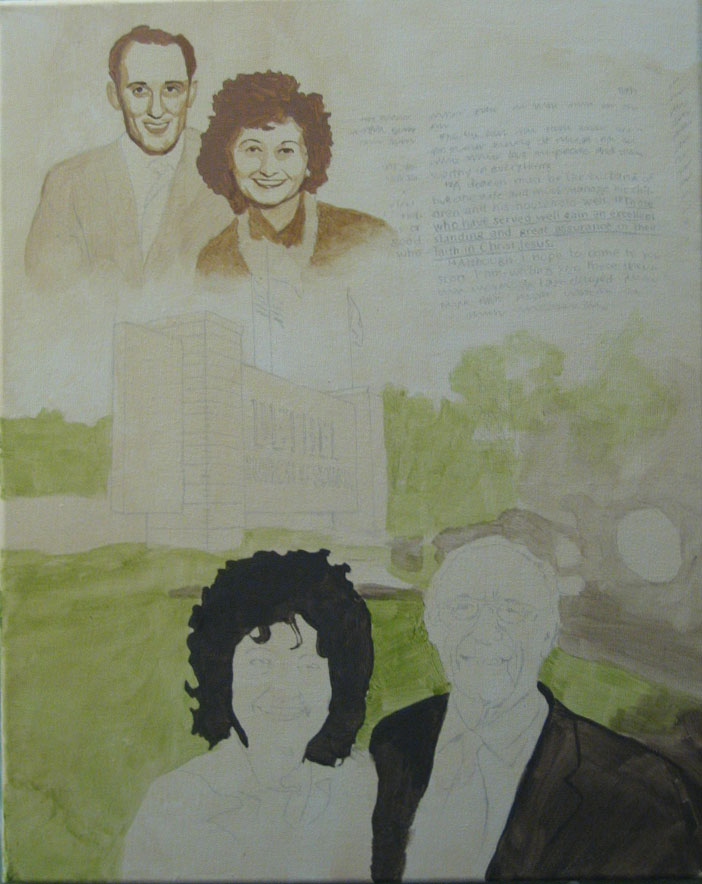
Portrait of Pastor & Mrs. Philip Palser, 16 x 20, acrylic on canvas, 2005 by fine artist Matt Philleo, Step 1
But then as I invest more time into it, I expect that a painting should start “behaving” and looking pretty good, for all the time I put into it. However, that doesn’t always happen. In fact, for me, it usually doesn’t.
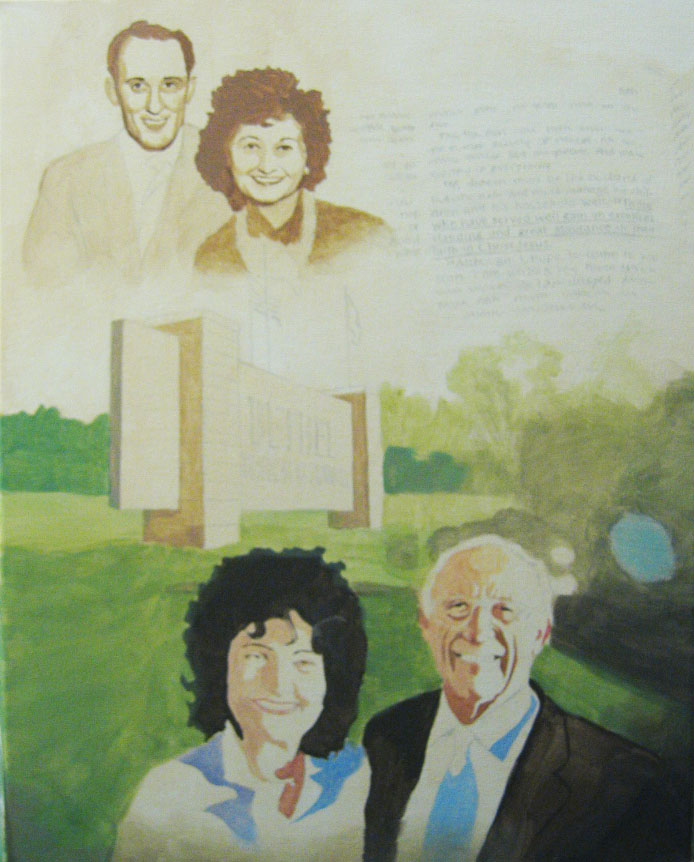
Portrait of Pastor & Mrs. Philip Palser, 16 x 20, acrylic on canvas, 2005 by fine artist Matt Philleo, Step 2
Somewhere around these two stages. the painting looked pretty goofy, and it’s about at this point where my wife remarked, “I don’t know if you can pull this one off.” She said that the pastor’s wife looked like some weird “california girl.”
Even though I was tempted for a moment to give up, I thought something along the lines of, “I know what this needs to look like in the end. I’ve got my reference photo next to me. I’ve got some paint and a palette. Sooner or later, it’s going to look like it should and it will turn out alright.”
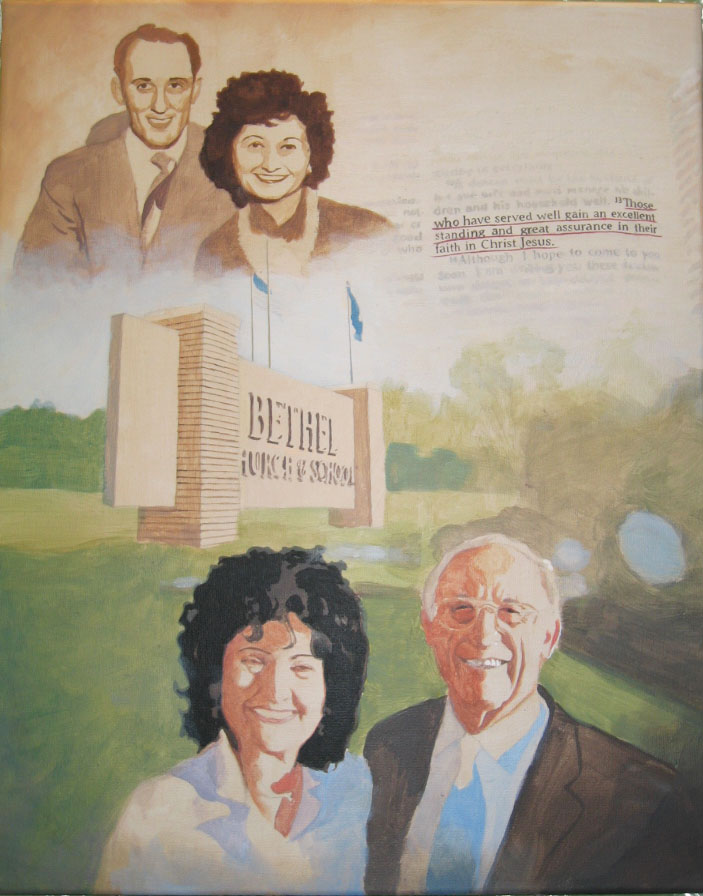
Portrait of Pastor & Mrs. Philip Palser, 16 x 20, acrylic on canvas, 2005 by fine artist Matt Philleo, Step 3
After a few more hours, the painting started to turn the corner. Even though I think I had painted certain areas of the faces a bit too dark, I was able to layer over them with just the right mix of colors to adjust what was off.
When you are establishing values and colors on your faces, sometimes the accuracy you had in your sketch will be thrown off. Capturing these shadows are vital to making a person’s face look like the person you are trying to capture. Since shadows describe the contours and shapes of eyebrow ridges, noses, cheekbones, jawlines, and so many other parts on a human face, it’s important to realize that during the in-between stages, you won’t have an accurate likeness. It’s like a sculptor who has to chisel off many fragments of marble or wood to get the beautiful sculpture that was hiding inside the whole time.
Soon enough, I could see the likenesses taking shape.
That excitement of certain areas of the picture starting to look great then compels you to work even harder to get to the finish line of a signed portrait.
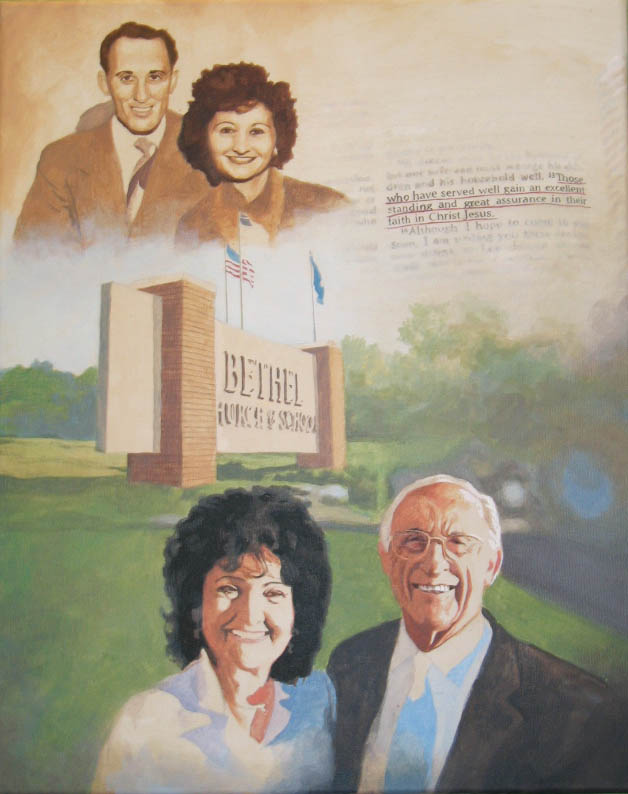
Portrait of Pastor & Mrs. Philip Palser, 16 x 20, acrylic on canvas, 2005 by fine artist Matt Philleo, Step 4
There was still a lot of detail work to do: many nuances to add in the clothing, details in the face and bricks in the church sign. It took a lot of patience, but it paid off. After about 35-40 hours, I had a finished painting!

Portrait of Pastor & Mrs. Philip Palser, 16 x 20, acrylic on canvas, 2005 by fine artist Matt Philleo
I presented this to my pastor and his wife at his 80th birthday party. They loved it. That was 12 years ago, by the way. He is now 92, and still preaches (although not as much as he used to) today!
So again, I want to encourage you: if you are painting a portrait in acrylic, the next time you feel like giving up at a certain part in the process, push past it and keep going. Continually refer back to your reference photo, and paint exactly what you see. If you don’t give up, you will have the confidence knowing that you can finish what you started, and your paintings will never get the best of you. But you will give your paintings the best, and have something excellent to show for your efforts.
I’m writing this post on Good Friday, and this whole idea of finishing what you started, pushing past the difficulty, and seeing what good can come as a result, makes me think of Jesus’ passion. He could have decided as the going got tough–incredibly tough–knowing in advance what He would endure on the cross, to abandon his plan of providing salvation for the world by dying on the cross for our sins.
But instead, he headed for Jerusalem, knowing what would happen to Him there.
In the garden of Gethsemane, when it would have been easier to turn away from the preordained plan of experiencing God’s wrath for sin and even having His relationship with His father broken for a time, he prayed, “Not my will, but yours be done.”
And three days later, we all know…”the rest of the story.”

Portion of “Perfect Servant,” acrylic on canvas, 2002, by Matt Philleo
All this to say, there is great reward for not giving up, both in this life and the next. Happy Easter…and Happy painting!

–Matt
Share Your Thoughts!
If you have any comments or questions about what I wrote, please leave me your feedback below at the very bottom of the page! I will personally get back to you. Can you help me spread the word? Please share this post with your family and friends by using the social media links on the side or at the bottom of this page. Thank you!
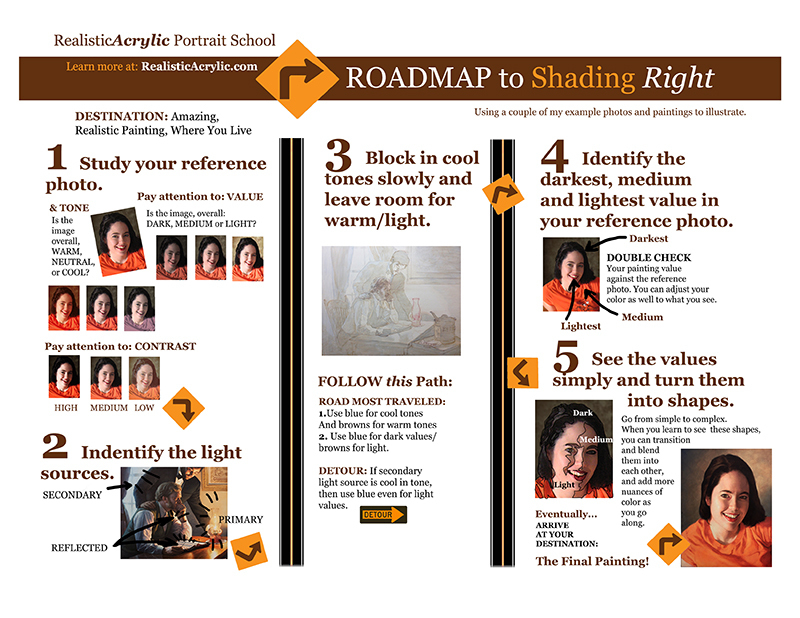























Recent Comments